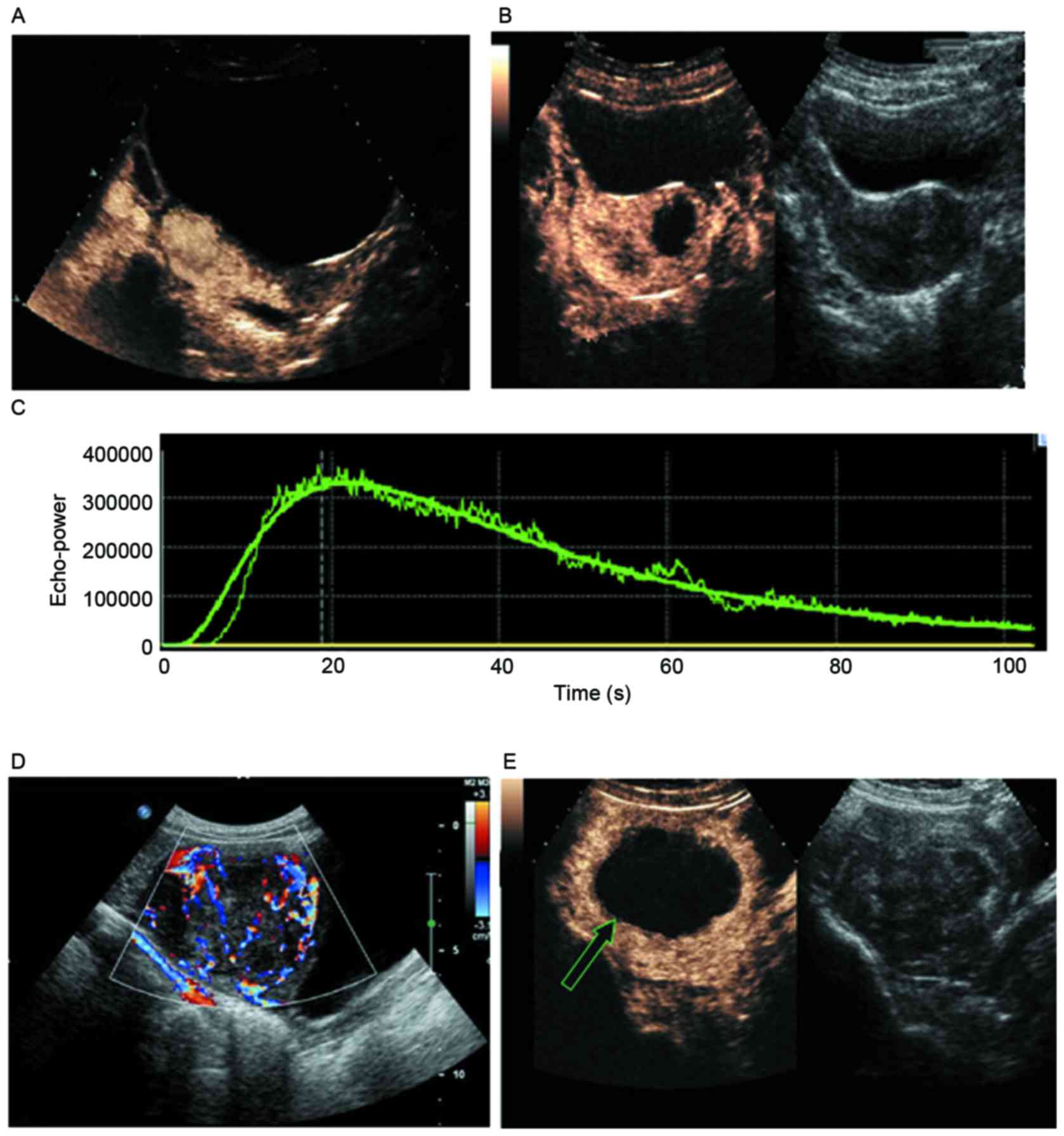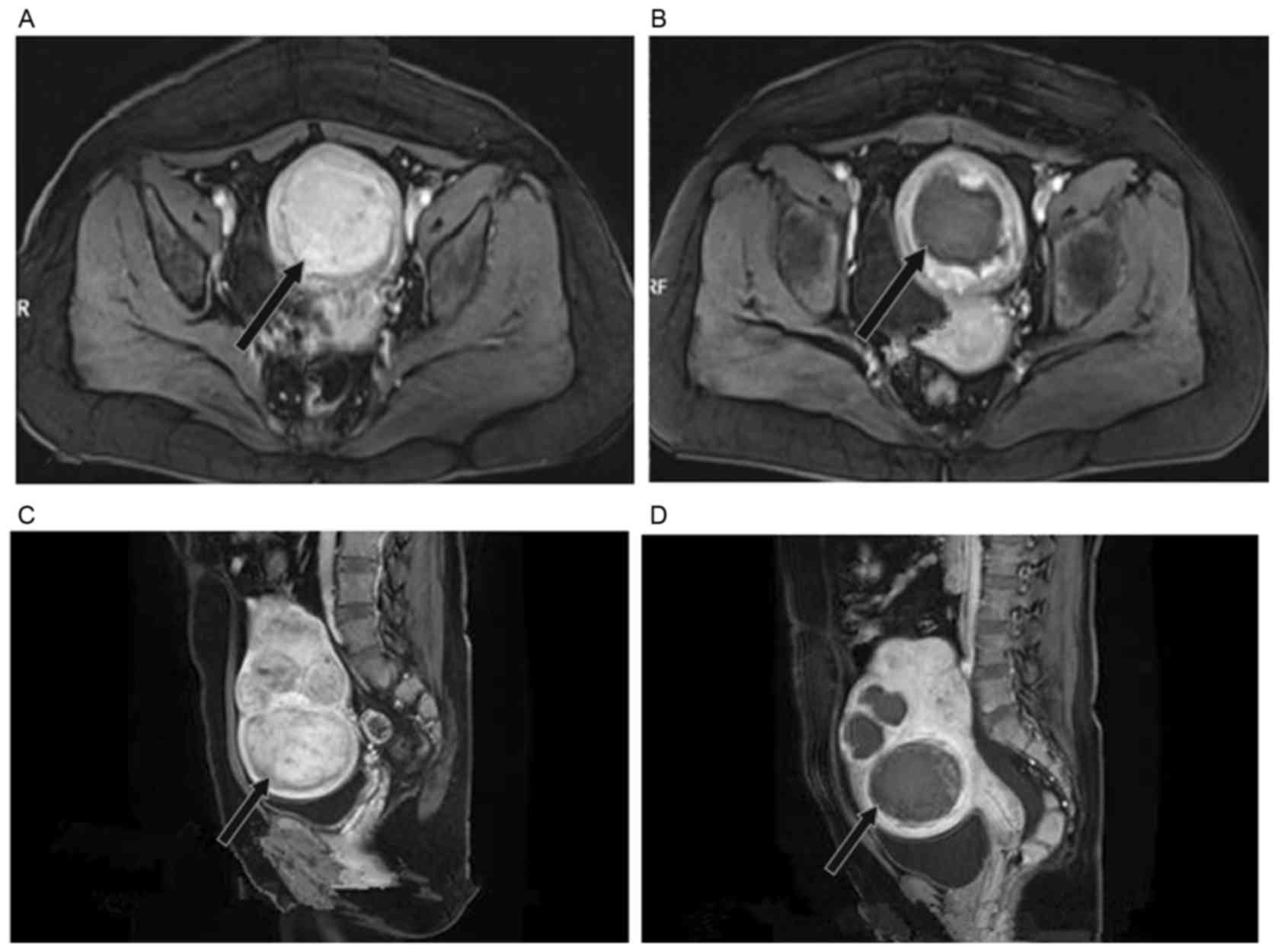|
1
|
Talaulikar VS and Manyonda I: Progesterone
and progesterone receptor modulators in the management of
symptomatic uterine fibroids. Eur J Obstet Gynecol Reprod Biol.
165:135–140. 2012. View Article : Google Scholar : PubMed/NCBI
|
|
2
|
Olejek A, Olszak-Wąsik K and
Czerwinska-Bednarska A: Long-term intermittent pharmacological
therapy of uterine fibroids-a possibility to avoid hysterectomy and
its negative consequences. Prz Menopauzalny. 15:48–51.
2016.PubMed/NCBI
|
|
3
|
Carrafiello G, Recaldini C, Fontana F,
Ghezzi F, Cuffari S, Laganà D and Fugazzola C: Ultrasound guided
radiofrequency thermal ablation of uterine fibroids: Medium-term
follow-up. Cardiovasc Intervent Radiol. 33:113–119. 2010.
View Article : Google Scholar : PubMed/NCBI
|
|
4
|
Ankem K: Information-seeking behaviour of
women in their path to an innovative alternate treatment for
symptomatic uterine fibroids. J Med Libr Assoc. 95:164–172. 2007.
View Article : Google Scholar : PubMed/NCBI
|
|
5
|
Estrade-Huchon S, Bouhanna P, Limot O,
Fauconnier A and Bader G: Severe life-threatening hemoperitoneum
from posttraumatic avulsion of a pedunculated uterine leiomyoma. J
Minim Invasive Gynecol. 17:651–652. 2010. View Article : Google Scholar : PubMed/NCBI
|
|
6
|
Ellens N and Hynynen K: Simulation study
of the effects of near- and far-field heating during focused
ultrasound uterine fibroid ablation using an electronically focused
phased array: A theoretical analysis of patient safety. Med Phys.
41:0729022014. View Article : Google Scholar : PubMed/NCBI
|
|
7
|
Chen XM and Luo PF: Current status,
questions and challenges of transcatheter uterine artery
embolization for the treatment of uterine fibroids. J Int Radio.
15:449–450. 2006.
|
|
8
|
Ren XL, Zhou XD, Zhang J, He GB, Han ZH,
Zheng MJ, Li L, Yu M and Wang L: Extracorporeal ablation of uterine
fibroids with high-intensity focused ultrasound: Imaging and
histopathologic evaluation. J Ultrasound Med. 26:201–212. 2007.
View Article : Google Scholar : PubMed/NCBI
|
|
9
|
Ghezzi F, Cromi A, Bergamini V, Scarperi
S, Bolis P and Franchi M: Midterm outcome of radiofrequency thermal
ablation for symptomatic uterine myomas. Surg Endosc. 21:2081–2085.
2007. View Article : Google Scholar : PubMed/NCBI
|
|
10
|
Dong BW, Liang P, Yu XL, Yu DJ, Zhang J,
Feng L, Cheng ZG, Wang Y and Wang ZL: Long-term results of
percutaneous sonographically-guided microwave ablation therapy of
early-stage hepatocellular carcinoma. Zhonghua Yi Xue Za Zhi.
86:797–800. 2006.(In Chinese). PubMed/NCBI
|
|
11
|
Liang P, Wang Y, Zhang D, Yu X, Gao Y and
Ni X: Ultrasound guided percutaneous microwave ablation for small
renal cancer: Initial experience. J Urol. 180:844–848. 2008.
View Article : Google Scholar : PubMed/NCBI
|
|
12
|
Zhang J, Feng L, Zhang B, Ren J, Li Z, Hu
D and Jiang X: Ultrasound-guided percutaneous microwave ablation
for symptomatic uterine fibroid treatment-a clinical study. Int J
Hyperthermia. 27:510–516. 2011. View Article : Google Scholar : PubMed/NCBI
|
|
13
|
Zhang J, Feng L, Zhang BS, Ren JT, Li ZC,
Wen B, Hu DM, Jiang X and Du LD: The study of percutaneous
microwave coagulation for uterine myomas. Chin J Med Ultrasound
(Electronic Edition). 8:40–43. 2011.
|
|
14
|
Wang F, Zhang J, Han ZY, Cheng ZG, Zhou
HY, Feng L and Hu DM: Imaging manifestation of conventional and
contrast-enhanced ultrasonography in percutaneous microwave
ablation for the treatment of uterine fibroids. Eur J Radiol.
81:2947–2952. 2012. View Article : Google Scholar : PubMed/NCBI
|
|
15
|
Huang JL, Xiong WL, Deng LW and Cheng GX:
The diagnostic value of MRI in adenomyosis. Chin J CT & MRI.
23:1417–1419. 2015.
|
|
16
|
Wei CF, Hu B and Jiang LX: Evaluation of
uterine adenomyoma treatment with high intensity focused ultrasound
by contrast-enhanced ultrasound. Chin J Med Ultrasound (Electronic
Edition). 7:54–59. 2010.
|
|
17
|
Zhu Li, Chen WZ, Chen JY, Wen HY, Deng YB,
Zhang R and Wang ZB: Study on the relationship between ultrasound
ablation for uterine fibroids and signal of MRI. Acta Acad Med
Militaris Tertiae. 14:1370–1373. 2009.
|
|
18
|
Hindley J, Gedroyc WM, Regan L, Stewart E,
Tempany C, Hynyen K, Mcdannold N, Inbar Y, Itzchak Y, Rabinovici J,
et al: MRI guidance of focused ultrasound therapy of uterine
fibroids: Early results. AJR Am J Roentgenol. 183:1713–1719. 2004.
View Article : Google Scholar : PubMed/NCBI
|
|
19
|
Zhou XD, Ren XL, Zhang J, He GB, Zheng MJ,
Tian X, Li L, Zhu T, Zhang M, Wang L and Luo W: Therapeutic
response assessment of high intensity focused ultrasound therapy
for uterine fibroid: Utility of contrast-enhanced ultrasonography.
Eur J Radiol. 62:289–294. 2007. View Article : Google Scholar : PubMed/NCBI
|
|
20
|
Zhang X, Peng S, Chen JY and Zhang RT:
Investigation on influence factors of ultrasound ablation in
treating multiple uterine fibroids. J Minimally Invasive Med.
03:2014.
|
|
21
|
Yan LM, He J, Huang GH, He M, Li KQ and
Zhang L: High intensity focused ultrasound ablation for uterine
fibroids in patients with retroposition of uterus. Zhongguo Chao
Sheng Yi Xue Zazhi. 28:72–74. 2012.
|
















